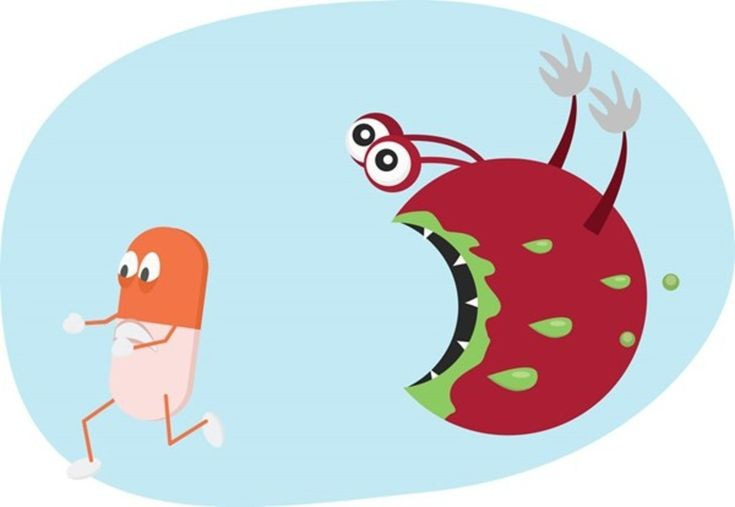Hii beautiful reader!
So, it's been a hot minute since I was here, but all that matters is that I am back and you are well. So today I want to do something a bit different. I figured since I haven't written here for a minute, I might as well publish a submission I did for the World Antimicrobial Awareness Week (WAAW).
This read is quasi- selective but for anyone not involved in the medical field, you might get something edifying from this. Good news: Negligible medical jargon used.
Enjoy!
ANTIMICROBIAL RESISTANCE.
Introduction.
This term, commonly abbreviated as AMR simply refers to a state in microorganisms such as bacteria, viruses and fungi being resistant to the effect of antimicrobial agents.
This is to mean that an ever increasing need is created for new antimicrobial agents to be synthesized. This is quite worrying as the last original class on antibiotics were discovered in the 1980s. This is because drug discovery has proven to be a tideous process due to reasons such as:
Challenges in identifying novel compounds that are both effective and safe.
Hefty financial implications as drug discovery requires at least $ 1 billion.
The regulatory processes that require long and tideous clinical processes.
This is quite portentous especially to the healthcare of the human race in general.
Reasons for AMR.
Antimicrobial resistance has been brought about by the widespread misuse of antibiotics. This ranges in different niches e.g. from excessive and unjudicious self medication at individual level to the overprescription of antibiotics by certified prescribers.
Antimicrobial resistance has also been brought about by poor patient compliance i.e. the patient does not complete the dose as directed, among many other reasons.
Mechanisms for Antimicrobial Resistance.
AMR has been brought about by different mechanisms such as:
Microorganisms developing efflux pumps to reduce the concentration of the drugs in their cells.
Alteration through mutation of the target sites of the antimicrobial agents.
Enzymatic inactivation of antimicrobial agents for example production of beta lactamase enzymes by microorganisms to inactivate drugs such as penicilins and cephalosporins.
It is also important to note that resistance of an organism may be acquired e.g. through mutations or plasmids.It may also be inherent. This is seen in gram negative bacteria, which are inherently resistant to vancomycin.
Statistics on the Adverse Impacts of AMR.
It goes without saying that the repercussions of AMR have been felt both socially and economically. According to an article published by World Health Organisation in 2023, the following were established:
In addition to death and disability, AMR has significant economic costs. The World Bank estimates that AMR could result in US$ 1 trillion additional healthcare costs by 2050, and US$ 1 trillion to US$ 3.4 trillion gross domestic product (GDP) losses per year by 2030.
Antimicrobial resistance (AMR) is one of the top global public health and development threats. It is estimated that bacterial AMR was directly responsible for 1.27 million global deaths in 2019.
Relevant Case Highlights.
Dear reader, did you know that Methicillin Resistant Staphylococcus Aureus (MRSA) infections increased the mortality rates during the COVID -19 pandemic? Co- infection with MRSA was quite notable and it led to complications, reducing the chances of survival of COVID-19 patients. MRSA's resistance to methicillin has made it difficult to treat.
Vancomycin Resistant Enterococci (VRE) infections especially in immunocompromised or hospitalised patients have also been of significant occurence and have caused a range of complications in said patients.
Solutions for AMR.
In as much as AMR has been a threat to the human race, there are several ways to combat it. These intervention steps include:
Good stewardship of antimicrobial agents. This ranges from judicious prescription of these agents to adequate information and education being given to patients and prescribers.
Preventing and controlling infections before they become severe. This can be done in several ways including vaccination and isolation of patients with infectious diseases such as TB.
Employment of stringent regulatory measures. These could include countries regulating the distribution and use of antimicrobial agents so as to reduce incidents of misuse.
Creating awareness of AMR. Awareness is always the first step toward meaningful action.
Encouraging research and development of new antibiotics by embursement and sponsorship programmes.
It is therefore our collective responsibility to contribute in any way,big or small, in ensuring that AMR is brought to an end. Change starts with each of us and grows through all of us.
References.
Antimicrobial resistance (2023) World Health Organization. Available at: http://www.who.int/ (Accessed: 07 November 2024).
SALLY NKIROTE KARIUKI.
nkirotesally241@gmail.com






Amazing🫶🫶❤️
If you go on like this, I might finally change courses.😂😂💀